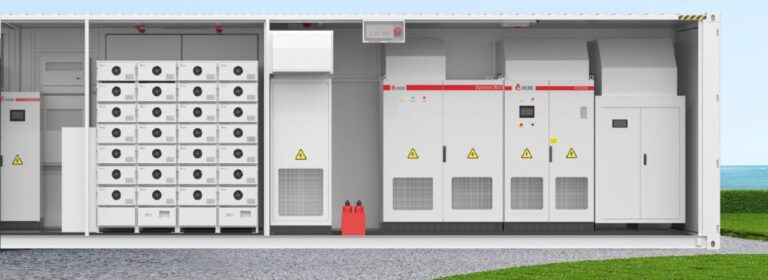Atess Power has developed a new series of Battery Energy Storage System (BESS) containers. The Chinese manufacturer offers 20 HC and 40 HC containers, as well as battery-only containers with a storage capacity of up to 3,440 kWh.
Atess Power, a Chinese manufacturer of PV inverters, has released a new series of BESS containers. The company offers different technology combinations in its EnerMatrix solution, using 20 HC containers or 40 HC containers.
“It supports both alternating current (AC) and direct current (DC) coupling solutions, enabling lightning-fast 0-10 ms on/off-grid switching,” the company said in a statement. “This versatility allows these systems to integrate seamlessly with microgrids, provide reliable backup power, and even perform peak shaving and frequency modulation tasks.”
In its 20 HC product line, the company offers inverters with powers ranging from 50 kW to 300 kW and lithium iron phosphate (LFP) battery storage in the range of 114 kWh and 1,260 kWh. They also include a combination of DC cabinets and automatic transfer switches.
In the 40 HC configuration, Atess Power offers inverters with powers ranging from 200 kW to 500 kW and LFP battery storage in the range of 429 kWh and 1,727 kWh. They also include a combination of DC cabinets, automatic transfer switches, transformers, external transfer feeders, power distribution cabinets and bypass modules.
“Extensive safety measures, the smart heating, ventilation and air conditioning (HVAC) system and the smart fire protection system ensure the utmost reliability and safety of these energy storage solutions,” the company said. “The containers are integrated with advanced communications features and can be easily integrated with existing energy management platforms.”
The company also offers two battery-only containers. In the 20 HC configuration it includes 1,720 kWh of LFP batteries, while in the 40 HC configuration it includes 3,440 kWh of storage. In addition, the company sells 40 HC product containers with transformers, bypass and power conversion systems.
“These systems are designed with accessibility in mind and can be serviced from both the front and rear, minimizing the time and resources required for ongoing maintenance,” the company said. “This user-centric approach is further complemented by a robust temperature control system, which ensures the stable operation of the system and extends its lifespan.”
This content is copyrighted and may not be reused. If you would like to collaborate with us and reuse some of our content, please contact: editors@pv-magazine.com.


